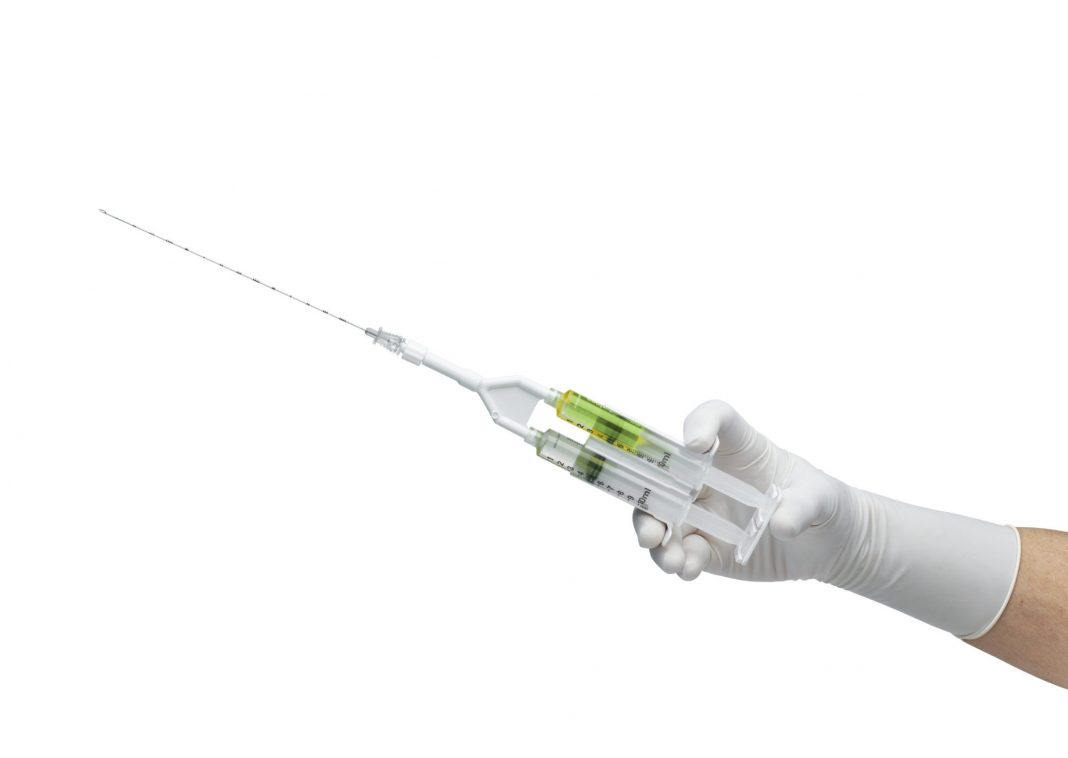SpaceOAR Vue Hydrogel, is a radiopaque version of SpaceOAR Hydrogel that provides the added benefit of enabling the use of computerized tomography scans instead of requiring magnetic resonance imaging.
Like its predecessor, SpaceOAR Vue Hydrogel is designed to create a temporary space between the prostate and the rectum, thus minimizing the potential side effects of radiation therapy for prostate cancer patients.
Prostate cancer is the most common non-skin cancer in American men. More than 183,000 new cases are diagnosed each year, and more than 60,000 of these patients opt to treat the condition with radiation.12 However, due to the close proximity of the rectum to the prostate, prostate radiation therapy can cause unintended damage to the rectum, which can lead to fecal incontinence issues or other long-lasting side effects. To reduce potential harm,perirectal spacers are recommended as a pre-treatment option within the National Comprehensive Cancer Network® (NCCN) Clinical Practice Guidelines in Oncology (NCCN Guidelines®).*
“SpaceOAR Hydrogel is already an important innovation in prostate cancer treatment to protect men from the unwanted side effects of radiation therapy,” said Marcio Fagundes, M.D., medical director of Radiation Oncology, Miami Cancer Institute, part of Baptist Health South Florida. “Now with SpaceOAR Vue Hydrogel, physicians have the added benefit of CT visibility of the hydrogel during radiation treatment planning and daily cone-beam computed tomography imaging. This added visibility expands its use in patients contraindicated for an MRI and, from my experience, will have the potential to improve the overall efficiency of treatment planning.”
The SpaceOAR Vue Hydrogel perirectal spacer is designed to offer similar clinical benefits as SpaceOAR Hydrogel, which was the first FDA-cleared hydrogel perirectal spacer and has been used in over 100,000 patients worldwide.3 In a randomized clinical study of the first-generation SpaceOAR Hydrogel, at median three years, more men in the control group than in the spacer group had experienced declines in bowel (41% vs 14%) and urinary (30% vs 17%) quality of life.4 Additionally, more men who were potent at baseline and treated with SpaceOAR were able to achieve erections sufficient for intercourse (66.7%, vs. 37.5% in the control group).5
“SpaceOAR Vue Hydrogel demonstrates our commitment to continually respond to the needs of healthcare professionals to help them provide patients with the best care possible,” said Meghan Scanlon, senior vice president and president, Urology and Pelvic Health, Boston Scientific. “With SpaceOAR Vue Hydrogel, physicians may be able to improve the department’s procedural workflow by creating treatment plans using only a CT scan, thereby reducing the need for patients to obtain a post-procedural MRI scan.”
1 Leading Cancer Cases and Deaths, Male, 2015. Centers for Disease Control and Prevention. Gis.cdc.gov/Cancer/USCS/DataViz.html. Accessed February 25, 2019.
2 Treatment for Prostate Cancer: External-Beam Radiation Therapy. Prostate Cancer Foundation. https://www.pcf.org/c/treatment-for-prostate-cancer-external-beam-radiation- therapy/. Accessed February 13, 2019.
3 Number of patients is based on units shipped and a Boston Scientific proprietary algorithm
4 Hamstra DA, Mariados N, Sylvester J, et al. Continued Benefit to Rectal Separation for Prostate Radiation Therapy: Final Results of a Phase III Trial. Int J Radiat Oncol Biol Phys. 2017;97(5):976-985.
5 Hamstra DA, Mariados N, Sylvester J, et al. Sexual quality of life following prostate intensity-modulated radiation therapy (IMRT) with a rectal/prostate spacer: Secondary analysis of a phase 3 trial. Pract Radiat Oncol. 2018;8(1):e7-e15.



